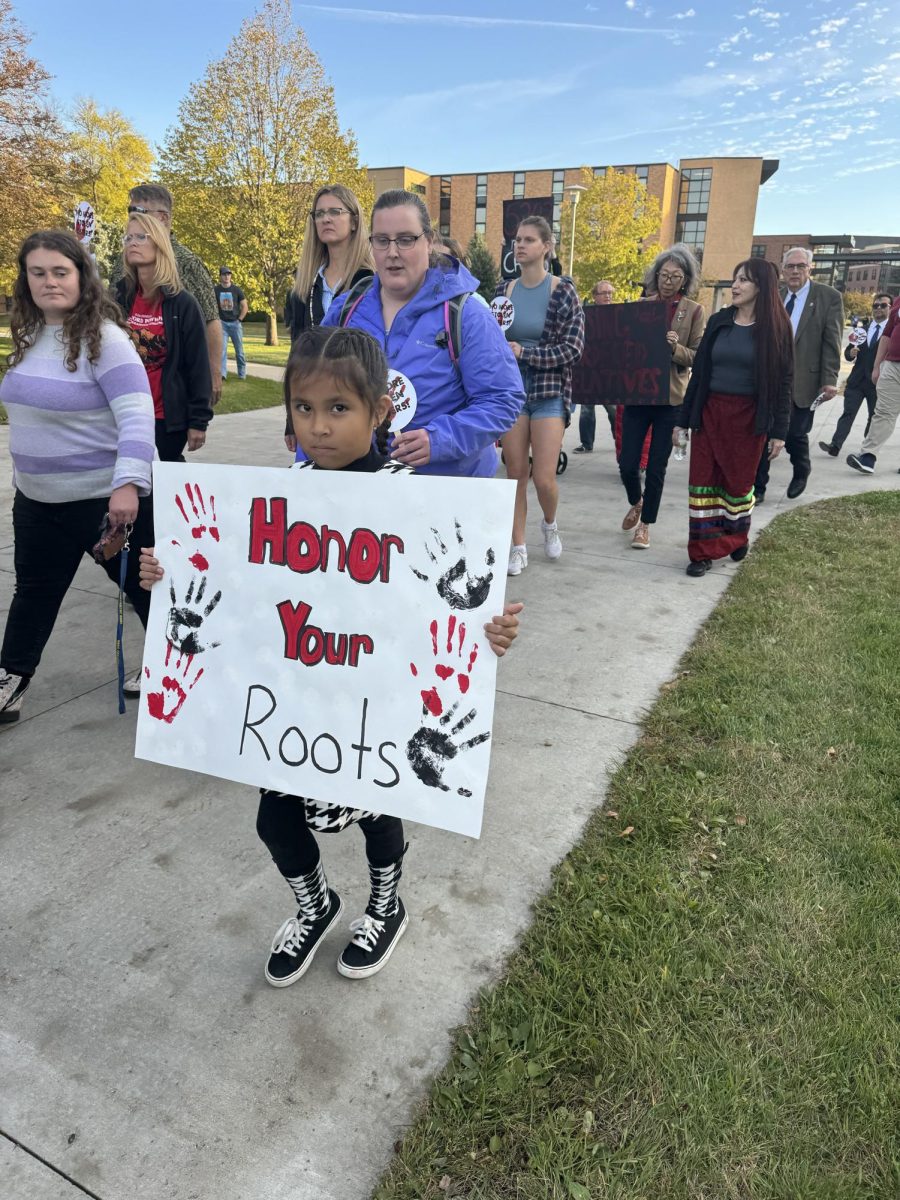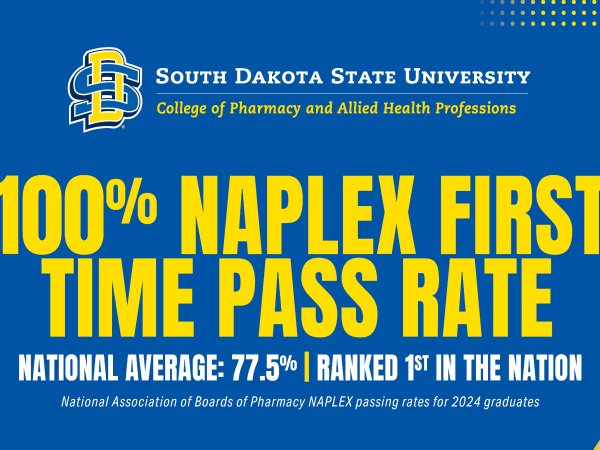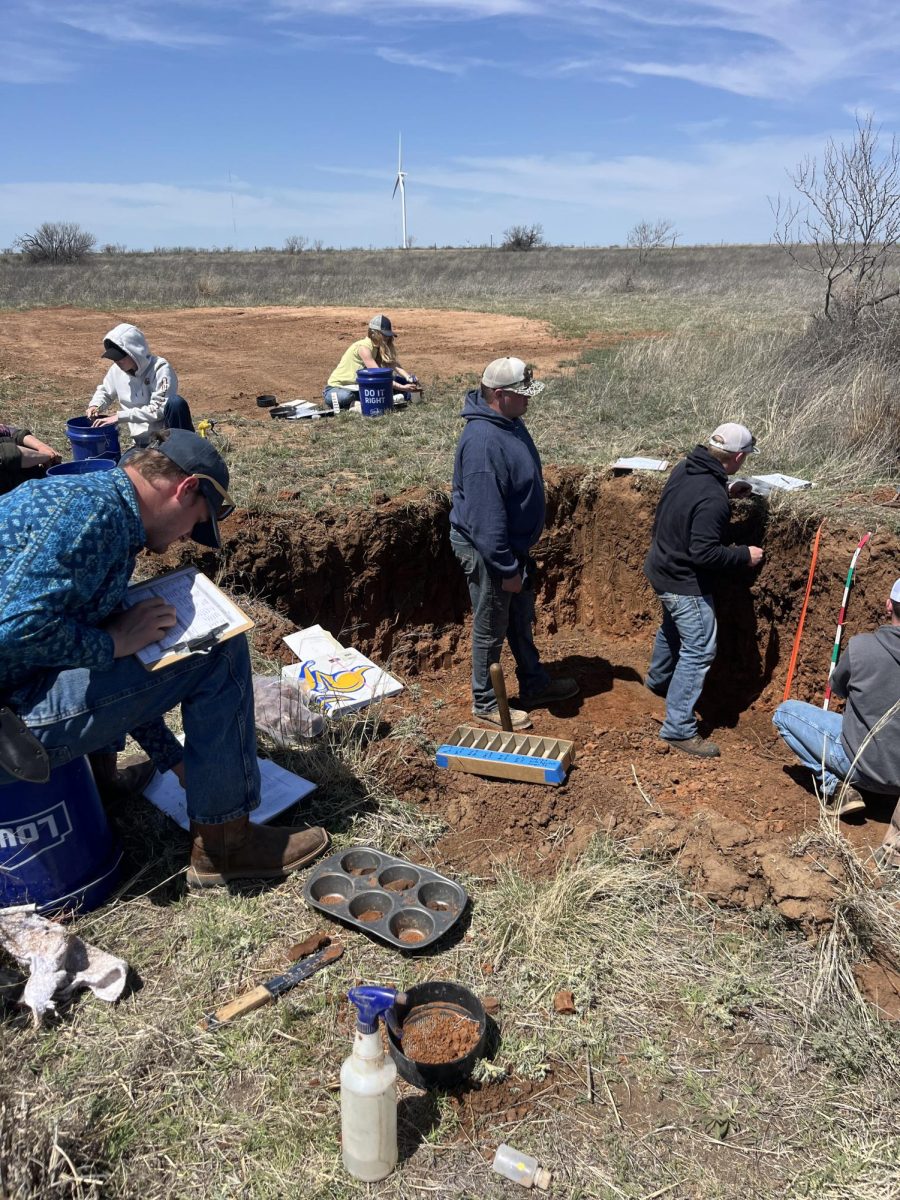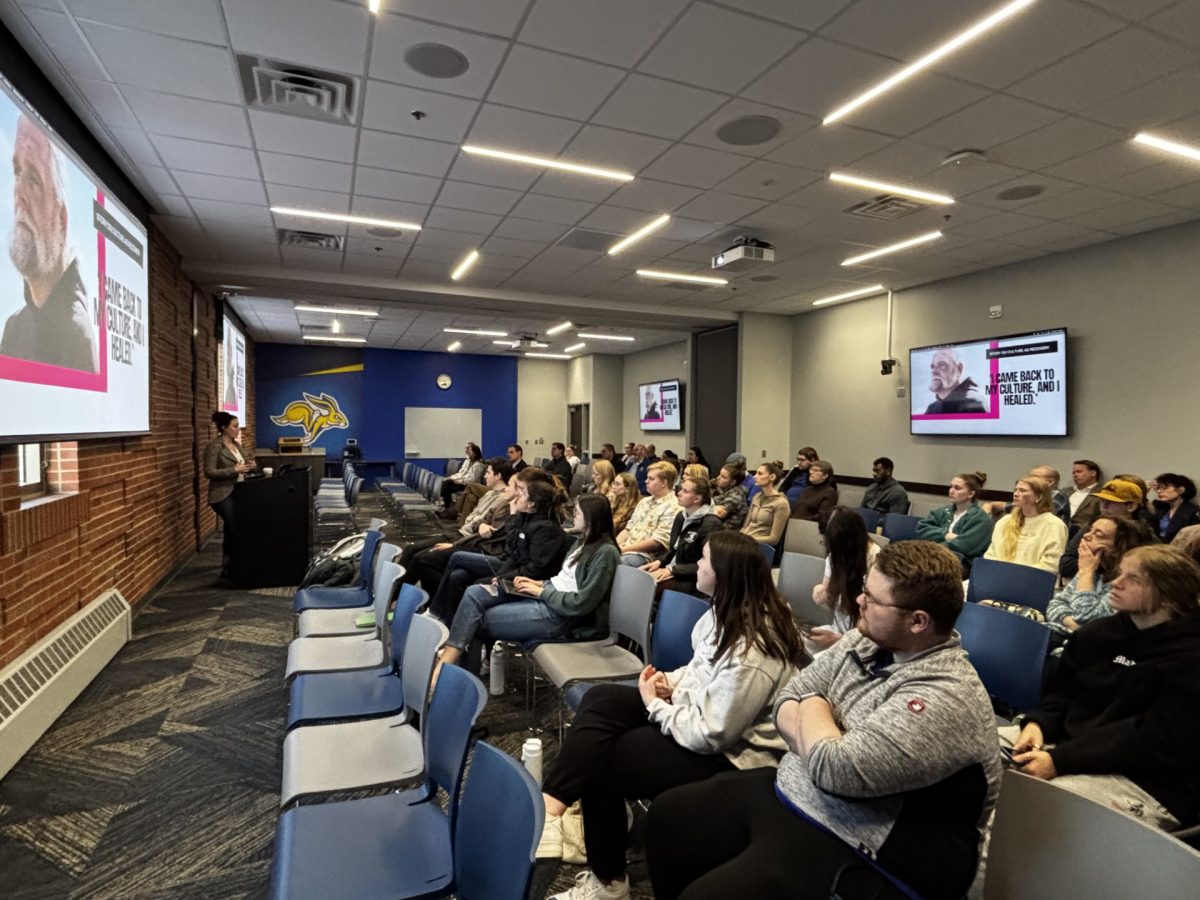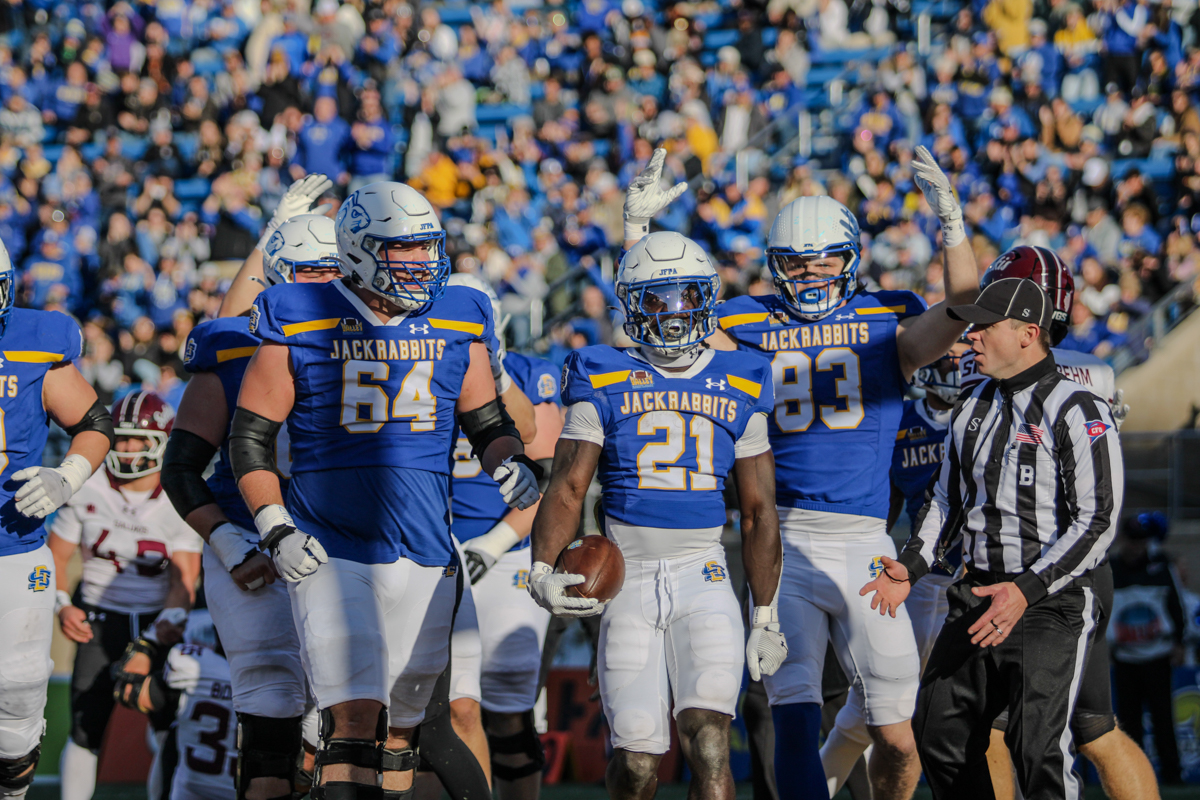Tuesday, Oct.17 marked the second annual MMIW (Missing Murdered Indigenous Women) walk sponsored by American Indian Students Association (AISA).
The walk began with an opening song from Flandreau drum group from Wakpa Ipaksan ,and circled around campus past the student union, the library, and the campanile. The members of Wakpa Ipaksan played along the way as students and community members alike joined in for the movement.
“It means we’re educating campus,” said AISA President Dallas Kelso. “we’re heard, we’re seen and we’re a voice for these women who cannot speak because they’re missing and murdered.”
After the walk everyone was invited back to the American Indian Student Center for a presentation by Lily Mendoza, a member of the Cheyanne River Sioux Tribe and a co- founder of the Red Ribbon Skirt Society (RRSS). The society aims to bring light and help familieswho have lost loved ones. Mendoza began her research on MMIW in 2013 and founded her society in 2016 and is completely funded by donations of money and time. She checks on families as they go through the struggle and donates money to those who need it for funeral, wake, and memorial costs.
The RRSS goes to schools spreading awareness and has red dresses that are blessed by tribal leaders. They have organized a healing room in Ft. Perrie, SD and have a tree on the sacred monument of Bear Butte reserved for Prayer as well as trees in various other locations.
One of the unique things RRSS does is represent more than MMIW they have dresses in different colors to represent other ways Indigenous communities lose people.
- Yellow- those lost to suicide
- Blue- those lost to human trafficking
- Orange- for boarding school children
- Stars- children murdered in foster care
- Red- Missing Murdered Indigenous Women
“Red is the color that spirits can see and that’s a big part of the movement,” Mendoza said.
MMIW has deep meaning beginning in Canada before coming into the US and has begun to grow as a movement and more people begin to speak out every day as more women get murdered. Murder is the third highest leading cause of death for Native American women in the United States.
Kelso said because October is domestic abuse awareness month, they planned the walk for October. According to the U.S Bureau of Indian Affairs four out of five Native American women had experienced violence in their lifetime and Kelso said that was also an issue they wanted to address.


















